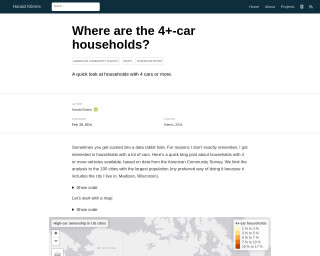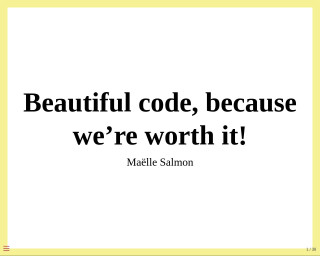Resources
This carefully curated collection of resources will help you find packages and learning resources to help you on your R journey.

Where are the 4+-car households?
Harald Kliems investigates the prevalence of 4+-car households in the 100 most populous US cities using data from the American Community Survey. The blog post highlights the spatial distribution of such households and contrasts the top and bottom ten cities in terms of the percentage of 4+-car ownership. Key R packages used in the analysis include tidyverse, tidycensus, tigris, gt, and tmap. This examination into the facets of American car ownership is accompanied by visualizations such as maps and tables, enabling deeper insights into the data.
Go to Resource

Winners of the Posit Closeread Prize - Data-Driven Scrollytelling with Quarto
This blog post discusses the winners of the Closeread Prize, featuring data-driven scrollytelling stories created with Quarto. The Closeread Prize challenged participants to craft compelling web narratives that unfold with user scroll, using the Quarto Closeread extension. Submissions spanned various topics and tools, with 40 entries exhibiting a mix of narrative, visuals, and technical prowess. Judges from diverse backgrounds evaluated the entries for narrative quality, scrollytelling suitability, visual polish, and technical achievement. The grand prize and special prizes highlighted the exceptional use of scrollytelling, technical skill, visual elegance, and integration of dynamic data visualization.
Go to Resource

Writing beautiful code
This content is a comprehensive guide on writing aesthetically pleasing and maintainable code, with a focus on R programming. The author, Ma"elle Salmon, explains the importance of beautiful code for readability and collaboration. The guide includes practical tips and tricks, and emphasizes adherence to coding styles, proper spacing, avoiding overly long lines, and creating descriptive functions. Additionally, the author discusses reducing unnecessary comments and documenting functions effectively. The guide also covers using tools like {styler} for automatic formatting and encourages learning from others' code to extend one's R vocabulary.
Go to Resource